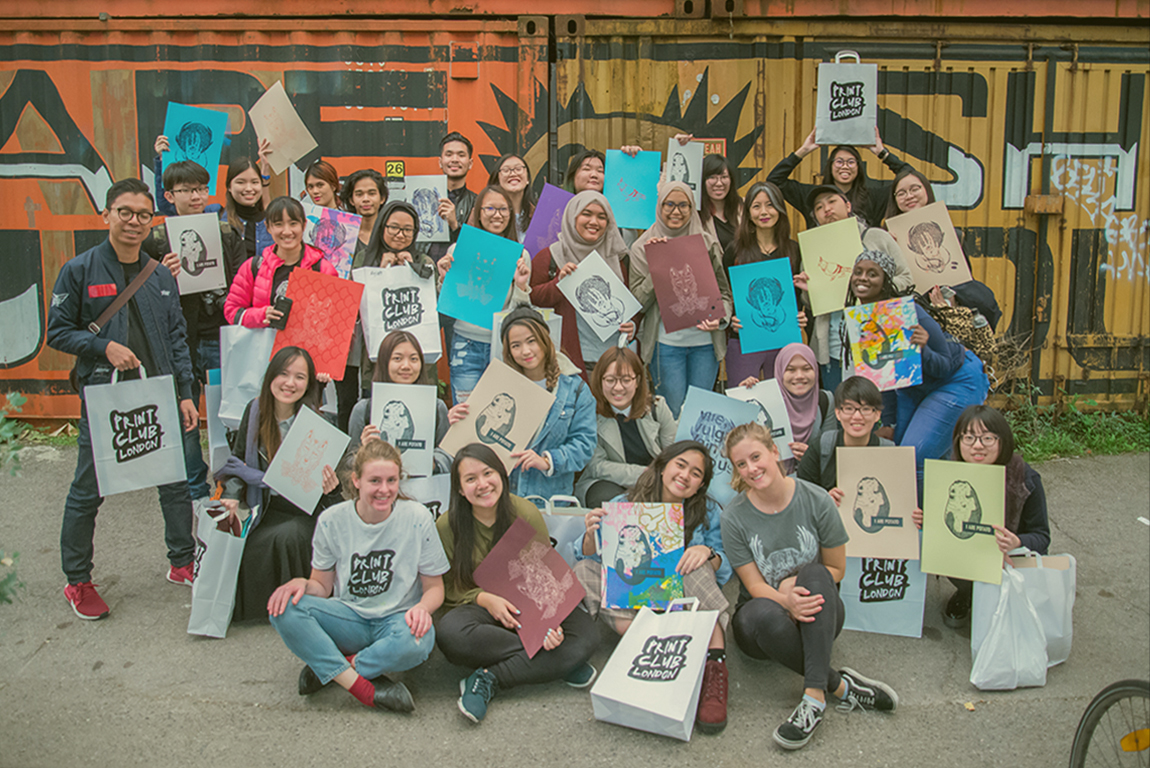Since joining Taylors University (one of the leading private universities located in Subang, Malaysia) in 2015, I’ve had the opportunity to facilitate several international field trips to some of the world’s most wonderful cities: Berlin, London, Hong Kong, Osaka, and Tokyo. The students, based on their feedback, have found the travel enriching. They are able to experience art and design landscapes that are vastly different from what they have seen locally.
“What one learns in a classroom is just a very small part of the learning process. The real learning starts when one crosses borders and travels miles for real knowledge,” explains designer Vivek Sahni.
I consider education travel part of experiential learning as explained by American educational theorist David Kolb. His spectrum of experiential learning is wide including a range of activities that fall under the umbrella of experiential learning. Though there are many definitions of experiential learning, it is essentially learning from experience. Kolb describes experiential learning in four cycles; concrete experience (feeling), reflective observation (watching), abstract conceptualisation (thinking) and active experimentation (doing).
Therefore, the design and planning of the types of experiences the students will go through is crucial when it comes to experiential learning. While a trip may look leisurely in nature, each student receives an assigned task to be completed during the trip. They are also asked to record their reflections of the overall experience throughout the excursion. At the conclusion of the trip, together with colleagues Ms. Noranis Ismail (title, The Design School, Taylor’s University) and Dr. Nurzihan Hassim (title, School of Communication, Taylor’s University, we) produced a paper that examined the role of experiential learning in creative design appreciation among students in The Design School, Taylors University (https://www.atlantis-press.com/proceedings/reka-18/25906949). Also, shortly after the Berlin excursion, we held an exhibition to showcase the work students produced during their workshop along with some personal artwork that students produced while there.

The students had the opportunity to explore and experience world class museums, art and design galleries, and participate in workshops (show image and use this caption: with Bauhaus Archiv Museum and Print Club London). The logistic of organizing and conducting such an exercise is laborious and time consuming. As such not many schools attempt such rigorous international field experiences.

And not to forget one of Malaysians’ many favorites: FOOD. The students were able to explore and taste different types of food from these cities. Heck, some students even did their project solely based on food they experienced in these foreign lands!
In addition, it is an amazing experience (as an educator), to witness the growth reflected in their project output based on their reflections and learning gained throughout these trip(s).

It is safe to say, going on these trips offers many benefits to students. It inspires students to link different ideas, including ones that they’ve learned in class, with what they’re experiencing on tour (https://www.explorica.com/blog/benefits-educational-travel). Students also get the opportunity to mix with their peers from other levels of studies that then open opportunities to collaborate and exchange ideas. When students interact with people from other cultures, they experience a change in perception that makes them more curious as well as accepting, and more likely to consider cultural contexts in their future design work and experiences.


You must be logged in to post a comment.